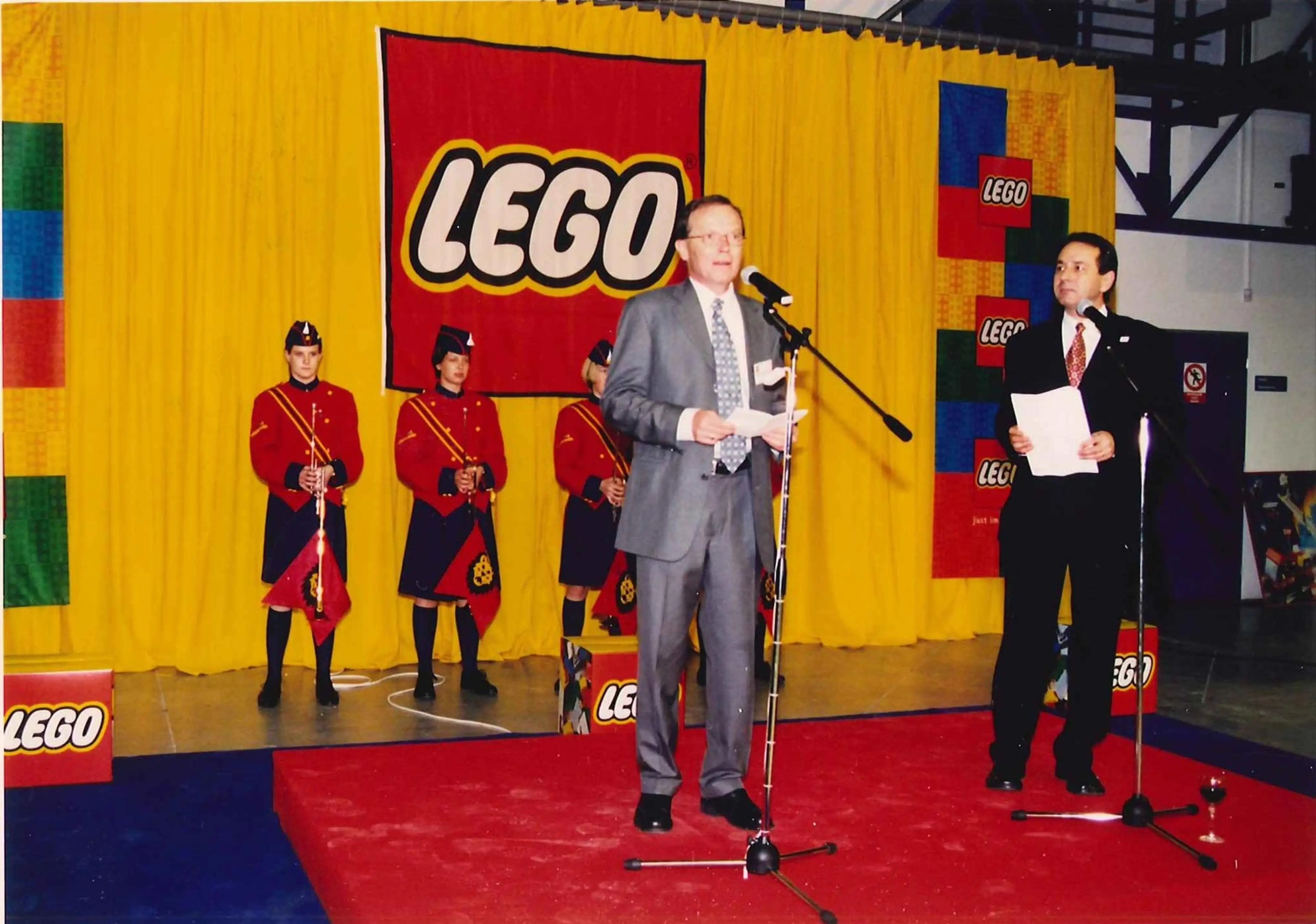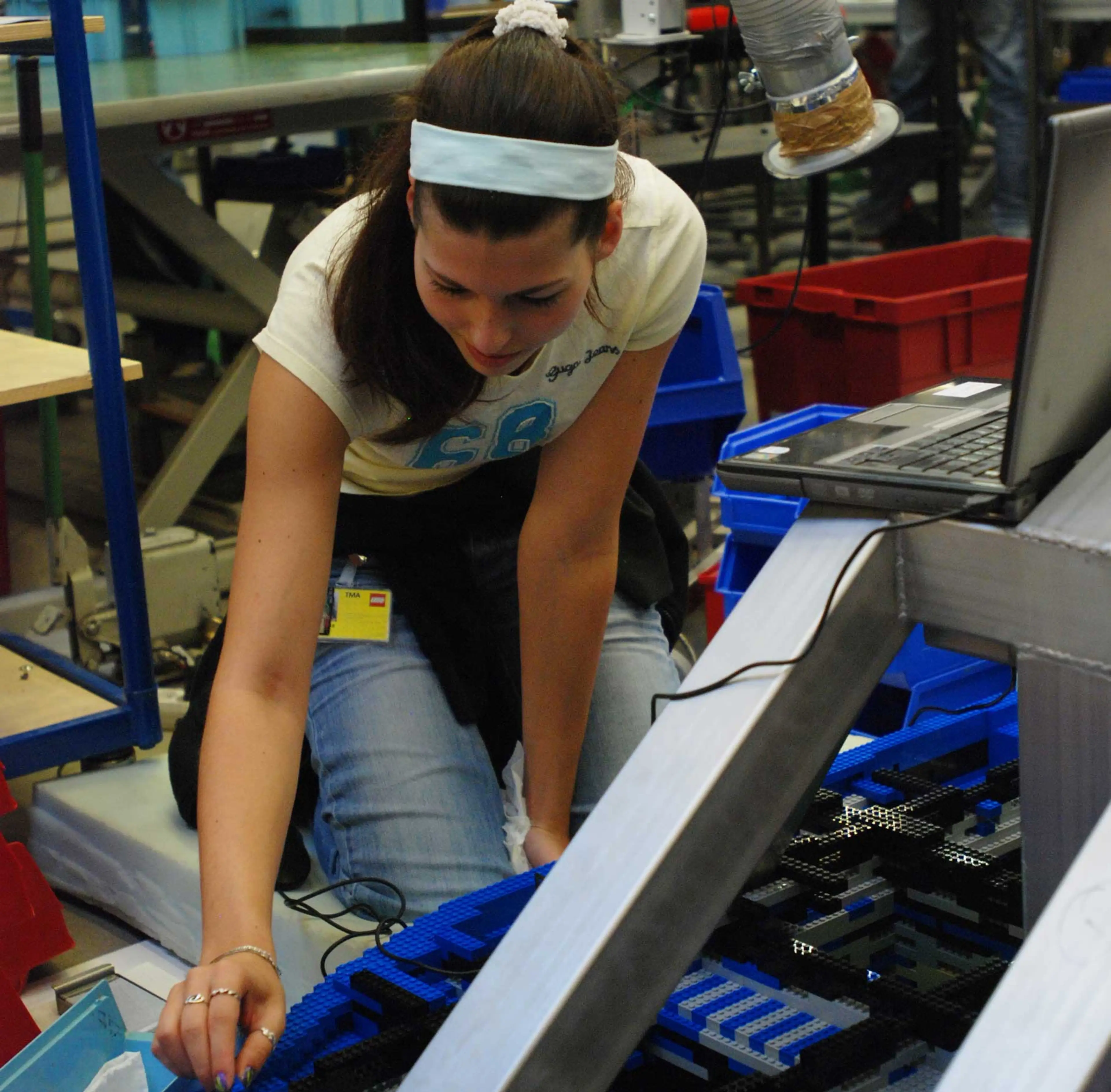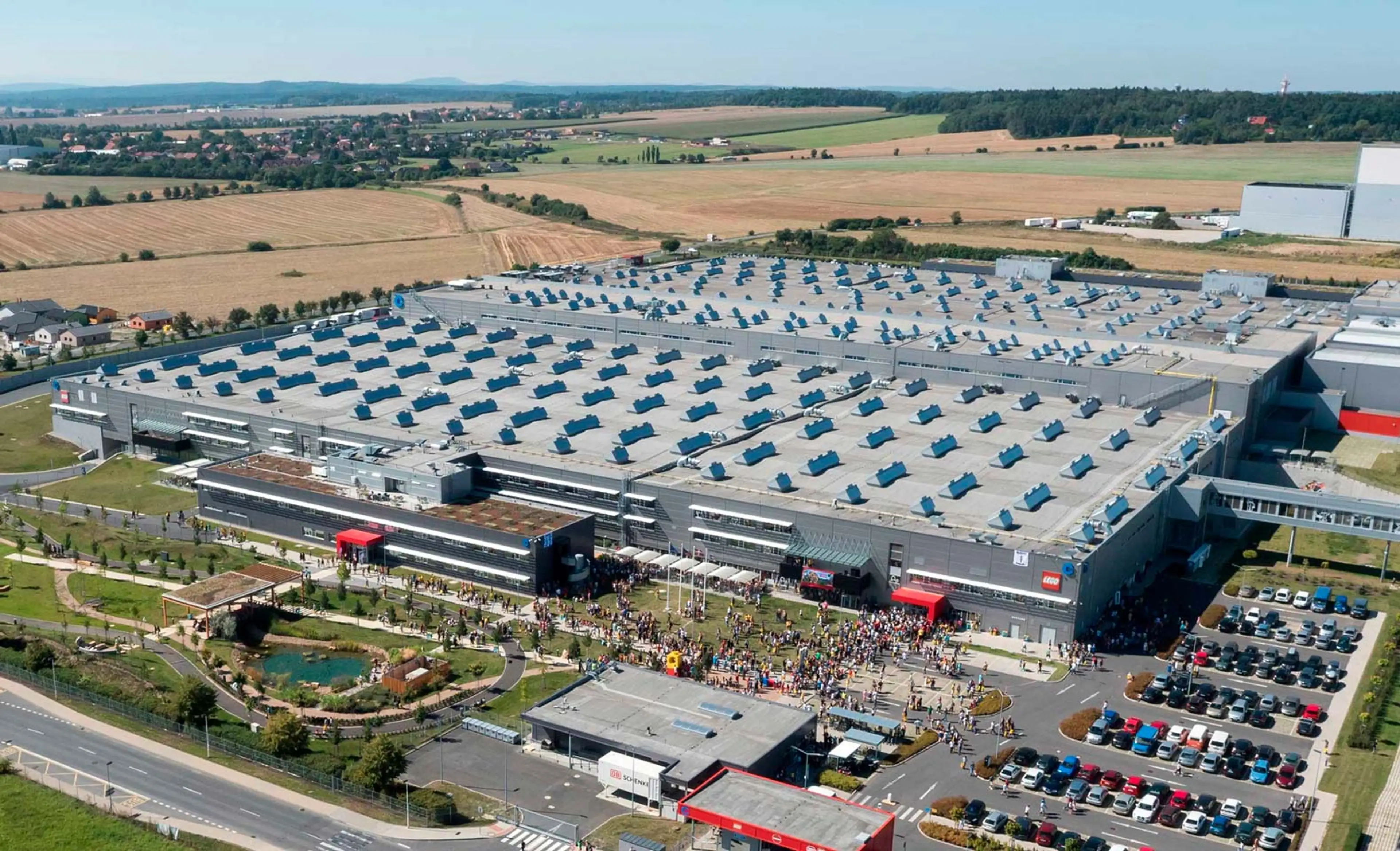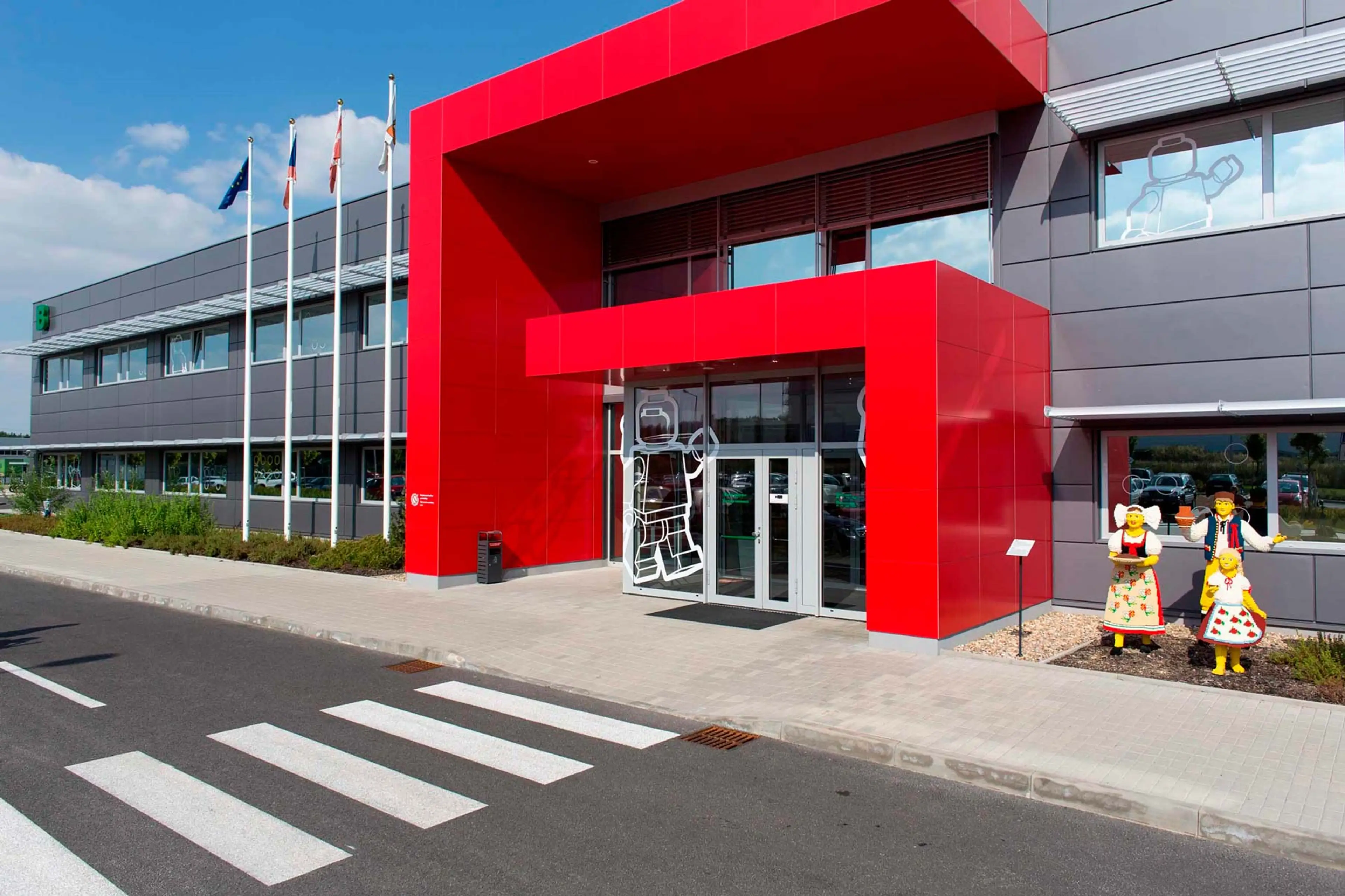In 1999, the LEGO Group announces its intention of building a new factory in the town of Kladno not far from the Czech capital, Prague. The plant is inaugurated in November 2000, and in his address Kjeld Kirk Kristiansen refers to some of the reasons for building a new factory in the Czech Republic:
Our new factory in Kladno gives us a central production point in Europe with an excellent infrastructure. It means we can quickly supply our markets in Western Europe and the rapidly growing market in the eastern part of Europe

LEGO owner Kjeld Kirk Kristiansen at the inauguration of the Kladno factory, 2000
Versatile factory
The factory will house molding, packing and model production, with model builders constructing models for LEGOLAND park displays in Billund, Windsor and California. In addition, model builders produce LEGO models for retail premises, toy fairs and sales campaigns.
As a provisional measure until the new factory is ready, the LEGO Group buys a 15-year-old factory near the site of the new LEGO plant and converts it for production, initially for model production, and the first model builders are in action in the first quarter of 2000.
The new factory opens in the year 2000, with LEGO System production starting in spring 2001 with molding, processing and packing.

Model builder at work in Kladno, 2010
Outsourcing
In 2006, the LEGO Group outsources production in Kladno to the company’s business partner, Flextronics. This happens as part of the Shared Vision programme, a policy designed to return the LEGO Group to profitability after several years of heavy losses. Simultaneously it is decided that the packing facility in Kladno will take over the packing of LEGO System sets hitherto done in Billund. With this in mind, the Kladno factory is expanded to handle the extra workload.
Although Flextronics takes over production, model production remains with the LEGO Group.
Relations with Flextronics, however, are plagued with difficulties over production. With the LEGO Group regaining its economic strength, it is decided to wind up the partnership with Flextronics, and in 2008, the LEGO Group again takes over the Kladno factory.
Heavy expansion
A decision is made in 2012 to expand the LEGO factory at Kladno in order to meet rising demand. Expansion proceeds in two stages. Stage One is to build a 3,200‑m² extension as an extra story on top of the building that houses processing. The upstairs extension will also house processing facilities, in the form of decoration and assembly of LEGO elements. Stage Two will be a new 11,000‑m² packing module and underground parking for 250 vehicles.
In 2015, 15 years after the inauguration of the LEGO factory in Kladno, the production area equals approximately 22 soccer fields and the buildings cover roughly 140,000 m2.

Overview of the Kladno factory, 2016
Besides molding, processing, packing and model building, the LEGO site in Kladno provides research and development of packing and decoration technologies as well as housing a high bay warehouse, with capacity for about 360,000 storage boxes with LEGO elements.
As one of the five LEGO molding sites (the other four are located in Billund, Denmark, Monterrey, Mexico, Nyíregyháza, Hungary and Jiaxing, China), the Kladno site plays a fundamental role in bringing LEGO bricks to children all over the world.
The Kladno factory is a key brick in our strategy of building a stable manufacturing base around the world, ultimately making sure that LEGO products are available to children and their parents when and where they want them - Bail Padda, COO, 2015
